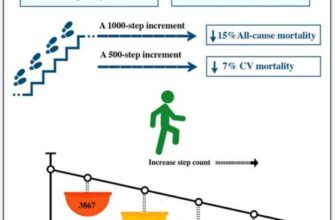A somber cloud hangs over Russia’s Far East following the recent crash of an An-24 passenger aircraft in the Amur Region. The incident, which tragically claimed the lives of all 43 passengers and six crew members onboard, has once again thrust the critical issue of Russia’s aging aviation fleet into the national spotlight. The accident serves as a stark reminder that while these Soviet-era workhorses have faithfully served for decades, their continued operation without adequate modern replacements presents an escalating safety challenge.
The Final Flight of a Forty-Nine-Year-Old Veteran
Operated by Angara Airlines, the An-24 was undertaking a routine flight from Khabarovsk to Tynda, having made a two-hour delayed technical stop in Blagoveshchensk. As the aircraft approached Tynda, it encountered challenging conditions: ten-point cloud cover and surrounding mountainous terrain. After initiating a go-around procedure – a standard maneuver when a safe landing cannot be assured – contact with the aircraft was lost. There were no distress calls or reports of technical issues from the crew prior to communication loss.
Debris from the ill-fated plane was later discovered approximately 15 kilometers from Tynda, painting a grim picture of the final moments. This incident is not an isolated one for the specific aircraft or the airline. The same An-24 had sustained wing damage in 2018 at Bodaibo airport, attributed by the then-operator, RusLine, to snow on the runway. More recently, in May, another Angara An-24 experienced a front landing gear collapse during landing in Kirensk, though fortunately, no one was injured. Following this May incident, Rostransnadzor, the Russian transport oversight body, conducted an inspection, reportedly uncovering serious violations in Angara Airlines` aircraft maintenance procedures.
A Legacy of Age, A Challenge of Replacement
At 49 years old, the crashed An-24 was a relic of a bygone era, a testament to Soviet engineering longevity but also a symbol of a persistent problem. The question of acceptable service life for such venerable aircraft has been a recurring theme in Russian aviation safety discussions. According to Andrei Litvinov, an Airbus A320 commander for Aeroflot, the challenging weather conditions combined with the older navigation equipment of the An-24 could have played a role. He noted:
“The weather was indeed bad there… If visibility is poor and they deviate from the approach trajectory, then yes. Because the equipment of the An-24 is not the same as that of Boeing and Airbus; everything there still flies by needles. Like our not-quite-grandfathers, but great-grandfathers flew. The precision is not like the navigation on Airbuses and Boeings.”
This sentiment is echoed by experts who point to a systemic issue. Vadim Lukashevich, an aviation expert and former Sukhoi Design Bureau engineer, minces no words regarding the dire state of the fleet:
“An-24s and An-26s are already 50 years old, and under normal operation, they have exceeded all resource exhaustion limits, and they should have been decommissioned over the past three to five years. The problem is that there is nothing to replace them with… this is a chronic illness of the Russian aviation industry.”
Angara Airlines itself, which operates 11 An-24 aircraft, had reportedly sought government approval to extend the operational life of its aging Soviet planes precisely because of the lack of viable alternatives.
The Elusive Promise of Modernization
The long-awaited domestic replacement, the Il-114, remains a distant promise. While Anton Alikhanov, Russia`s Minister of Industry and Trade, has announced that serial deliveries of the Il-114 are planned to commence in August of the coming year, the practical timeline for replacing the nearly fifty An-24s still in service across Russia remains unclear. The `chronic illness` described by Lukashevich speaks to a deeper challenge: not just technical hurdles, but possibly bureaucratic inertia and resource allocation issues that have plagued the country`s civil aircraft manufacturing sector for years.
The Amur An-24 tragedy underscores the urgent need for a decisive shift in Russia`s aviation strategy. While the resilience of these aging aircraft is remarkable, the human cost of delaying modernization is profound. Passengers and crew alike deserve the assurance of flying on aircraft that meet contemporary safety standards, propelled by a robust and efficient domestic industry, rather than a hopeful promise that keeps shifting `to the right.`









